The Ottawa Senators’ rebuild looks like a miserable failure, with the team doing much worse this year than last. Senators president of hockey operations and general manager (GM) Steve Staios must find a way to get the project back on track, or fans could be looking at a Rebuild 2.0 that could stretch out for years to come.
So, what happened to the Senators’ much-vaunted rebuild this year, and what can they do to end a seven-year journey through the desert of defeat, disappointment, and endless frustration?
Senators’ Take Step Back in 2023-24
Last year, the team missed the playoffs by just six points with a record of 39-35-8 and 86 points. To match last season’s wins in this campaign, they’ll need to win 14 of their last 21 games or roughly five of every seven games – a pace requiring a rise worthy of the mythical phoenix. In other words, it “ain’t gonna’ happen.”
The Senators have played 61 games, notching a points percentage (PTS%) of just .443 for a rank of 27th in the league. They are mentioned in the same breath as the Columbus Blue Jackets (.429, 29th), the San Jose Sharks (.298, 31st), and the lowly Chicago Blackhawks (.294/ 32nd). They are 18 points out of a wild-card spot.
It wasn’t supposed to be this way back in the warm, sunny days of September leading into the start of the 2023-24 season. Fans were giddy at the prospect of the Senators finally returning to the playoffs.
And how could they not with the addition of Jakob Chychrun to the blue line and sniper Vladimir Tarasenko to the team’s top six? Also, star centreman Josh Norris was returning, and Shane Pinto was tantalizingly close to being re-signed. Dominik Kubalik was expected to add depth, and young guns like Graig were close to bursting their way onto the roster.
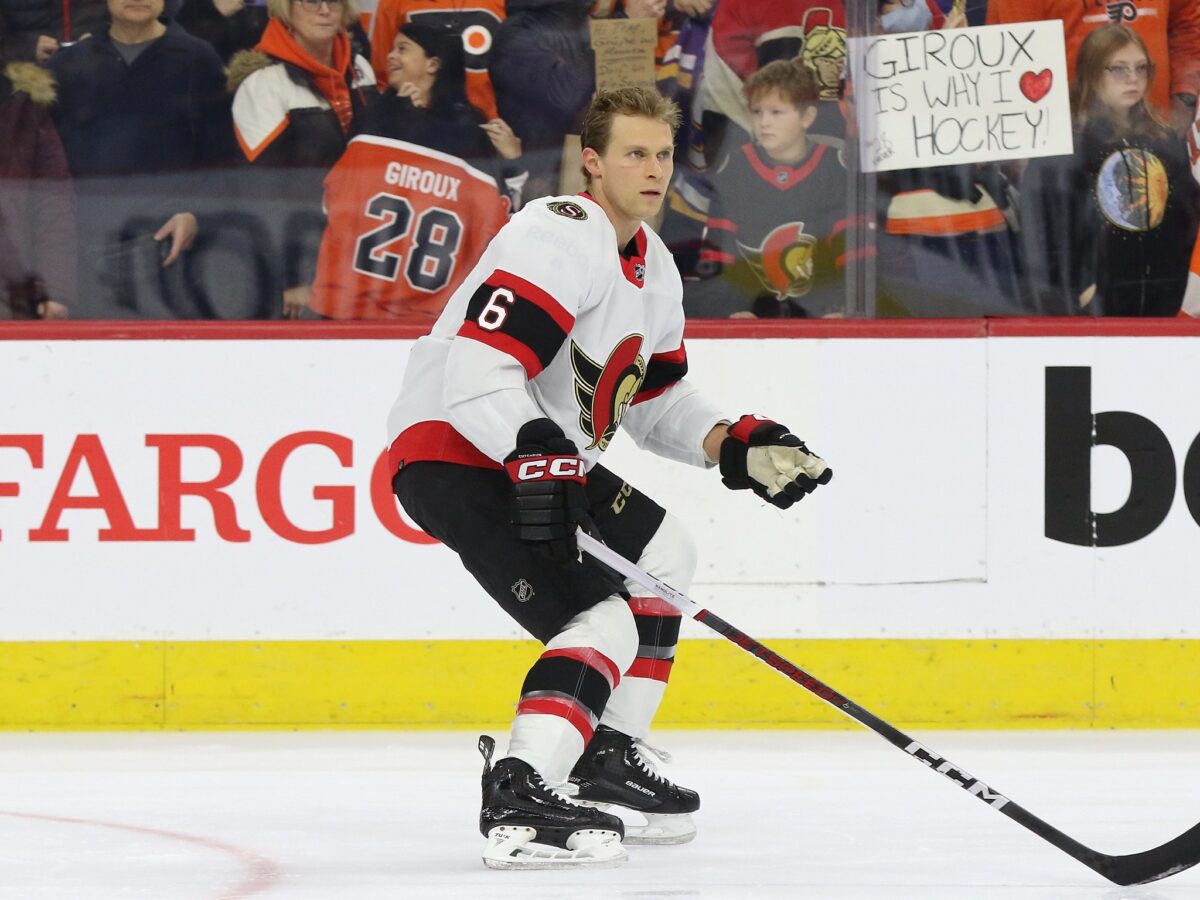
All of this was anchored by the team’s talented core, with Brady Tkachuk, Tim Stutzle, and Claude Giroux on the top line and Thomas Chabot and Jake Sanderson cruising the blue line. If that wasn’t enough, Joonas Korpisalo was coming to Bytown and expected to end a long history of misery between the team’s pipes.
Despite all of this, despite claims that “the rebuild is done,” the Senators had played themselves out of playoff contention by late November – just as they had in previous seasons. Fans wonder how a team as good as this one, at least on paper, could become one of the worst in the NHL. How could a team at the limit of the NHL’s salary cap miss the playoffs seven years running?
What Went Wrong With Senators’ 2023-23 Season
Fans can point to many reasons this season why the Senators failed to get beyond what now seems like a perpetual rebuild. Yes, there was a change in ownership, chaos in the front office with the firing of GM Pierre Dorion, and problems behind the bench capped off by the firing of head coach D.J. Smith. Add to all that the 41-game suspension of Shane Pinto and a long list of injuries to key players.
Even so, there is no escaping the fact that the Senators were found wanting in almost every aspect of their game this season. Take a look.
Senators’ Losing Culture
There is a culture of losing in Ottawa. Moral victories are too easily accepted in place of real triumphs. Staios has to be concerned that players like Tkachuk and Chabot, who have been in the league for six and seven years, respectively, have never had even a whiff of the playoffs.
With four years in a Senators sweater, Stutzle is farther away than ever from his dream of playing on a championship team. Going so long without winning risks ruining these players. Not only that but at what point do they decide they want out of Bytown, as Jack Eichel did in Buffalo?
Senators’ Goaltending is Ghastly
Ottawa’s goaltending wasn’t remotely close to what is required of a playoff team. In fact, it was well below the average for NHL teams. Taken as a whole, after 61 games, the trio of Korpisalo, Anton Forsberg, and Mads Sogaard registered a .885 save percentage (SV%). The league average is .903. Their goals-against average (GAA) of 3.43 was considerably higher than the league average of 2.92.
Senators’ Defence is Porous
The Senators’ defensive corps was missing in action this season. While Ottawa upgraded its blue line with the addition of Chychrun last year, it’s hard to make the case that the team has a back end that could be considered championship caliber. None of them would be regarded as among the top 25 defenders in the league.
What’s more, the Senators’ blueliners are on the smaller side compared to those of the Vegas Golden Knights, for example. They do not generate the offensive numbers of their other Atlantic Division rivals as a group.
Questions remain about Chabot. He never lived up to the franchise’s expectations when he was drafted as one of the Senators’ first-round picks in 2015. The Norris Trophy that many expected him to win has eluded him. Yet, to be fair, injuries and a weak blue line forcing him to log excessive minutes have taken their toll on Chabot.
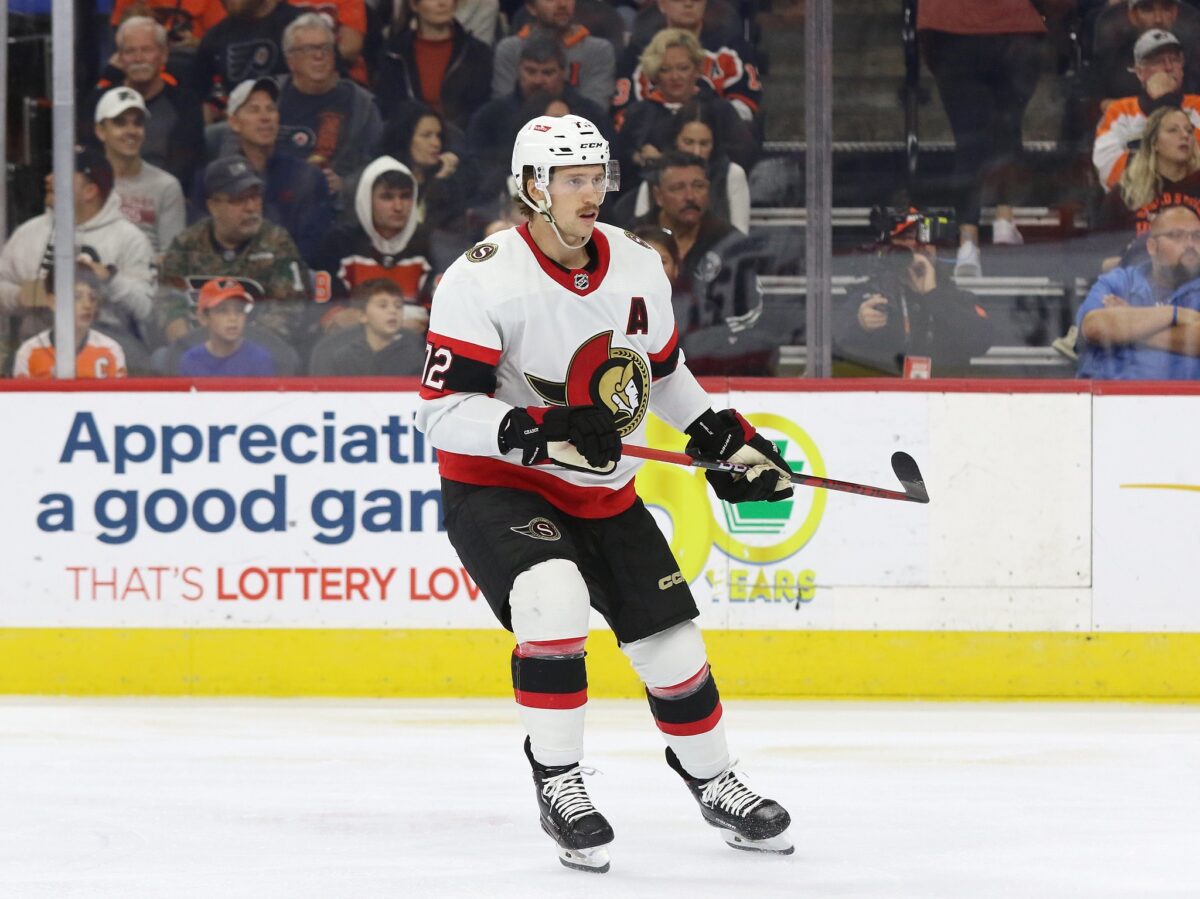
In the event of injuries, there wasn’t a lot of depth for the Senators to rely on this year in Belleville. Maxence Guenette and Tyler Kleven could step in to cover injuries, but as rookies, how much did anyone think the Senators could have relied on them in their push for a playoff spot?
The Senators’ D-corps is middling relative to their Atlantic Division rivals. For example, no Senators blueliner is in the same category as the Toronto Maple Leafs’ Morgan Reilly, who is among that team’s top six point-getters. Nor is any the equal of the Florida Panthers’ Aaron Ekblad, winner of the 2015 Calder Trophy as Rookie of the Year.
Charlie McAvoy and Hampus Lindholm patrol the Boston Bruins’ blue line. Victor Hedman, a 2018 Norris Trophy winner with two Stanley Cup rings, leads the Tampa Bay Lightning’s defense. Two-time Stanley Cup winner Mikhail Sergachev also cruises Tampa’s blue line.
Forwards Have Disappointed
What was expected to be the Senators’ top six this year—Stutzle, Giroux, Tkachuk, Drake Batherson, Tarasenko, and Norris—produced far fewer points than expected. Taking their combined points production and pro-rating it out to 82 games, the six (now minus an injured Norris and a Florida-bound Tarasenko) would have been on track to notch just 388 points.
Last season, that sixsome would probably have produced 435 points. That’s assuming, had Tarasenko been playing in Ottawa, that he would have matched his points production this year and that Norris matched what he did in the best season he’s seen in the league back in 2021-22. How many more games would those extra 47 points have in the Senators’ win column this year?
Related: Ottawa Senators’ Josh Norris Is Becoming Colin White
What is most surprising about the Senators’ offense this season is how Tkachuk and Stutzle fell off last year’s pace. Stutzle is on track for 77 points this season compared to the 90 he notched last year. Tkachuk is in the same boat, having racked up 83 points last year and now heading for just 69 this season. Success becomes elusive when a team’s big guns fall silent too often, as they have this year.
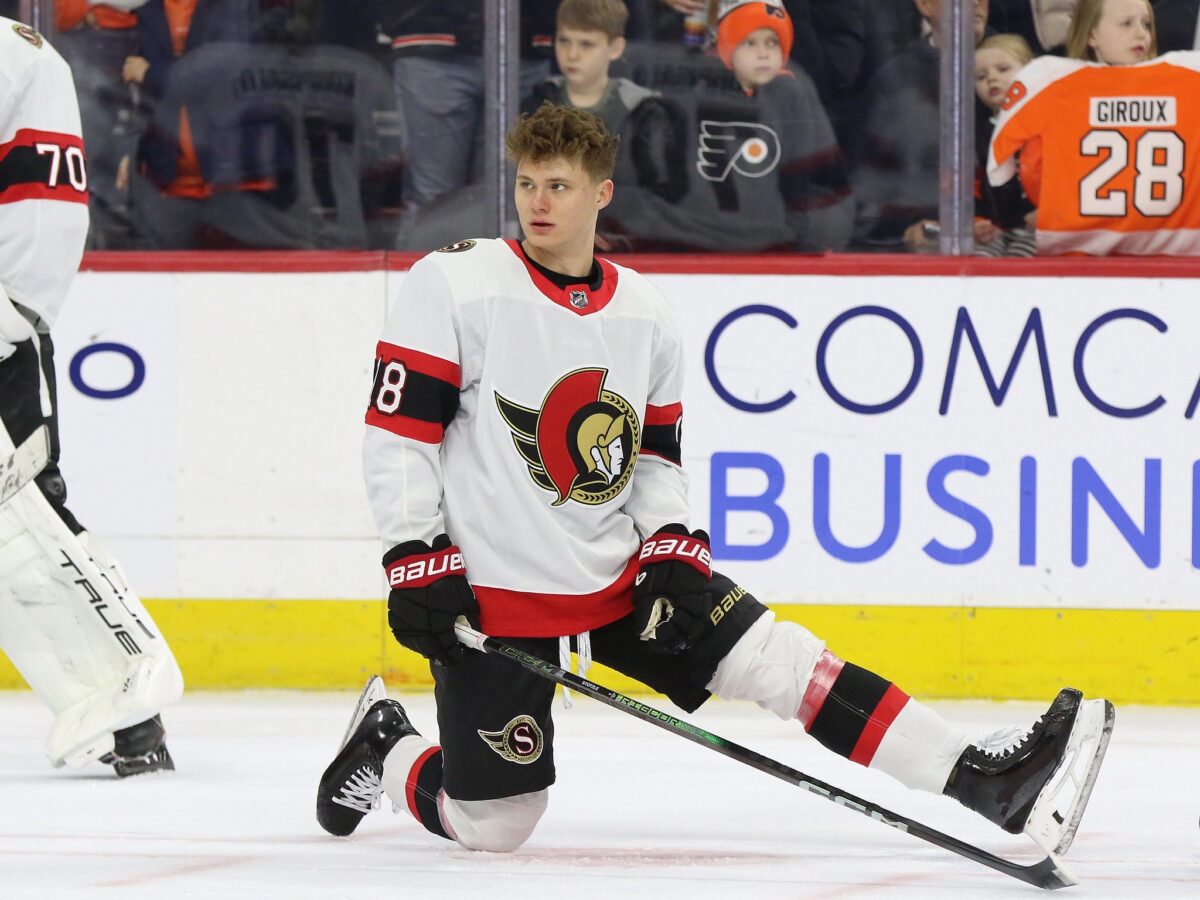
Yet it wasn’t just the top-six that was a problem during this campaign. The Senators’ depth players just haven’t produced many points. Playoff-bound teams can rely on scoring from more than just their top guns, and the Senators can’t. Rourke Chartier, Mark Kastelic, Parker Kelly, Kubalik, Greig, and Mathieu Joseph have marked up the score sheet so far this year for a combined 40 goals and 45 assists for a total of 85 points – just 20% of the team’s total. Take out Joseph’s 10 goals and 20 assists, and the picture worsens.
To sum up, even with all the talent and firepower their fans believe they have, the Senators are a mediocre team when it comes to scoring goals. Measured on goals for so far this season (199), they barely rank 15th in the league. Combine that with the 218 goals-against (GA) they’ve allowed to this point (for 26th in the league), and failure follows.
What Does Staios Do With the Senators?
It’s tempting for fans of the Senators to say blow it all up and start on another rebuild. Yet, if there’s anything Ottawa should have learned from their seven-year meander through the rebuild desert, they are fraught with risk. They don’t always work out – ask the Buffalo Sabres, now in the 12th year of a rebuild. And then there’s the Maple Leafs. Through various rebuilds over 20 seasons of play since 2002-03, the Buds have won just two playoff series. In 10 of those seasons, they failed to qualify for post-season action.
Related: Five Blueprints for Navigating a Successful NHL Rebuild
Even so, it would be tough for Staios to stay patient and have a rebuilding mindset focused on the future with his current lineup. Clearly, this team isn’t headed in the right direction. Continuing as they have over the last several years, hoping that with a little more seasoning, the team’s young talent will turn the corner and become playoff contenders is no longer an option.
Even so, Staios has limited room to maneuver. Let’s examine the constraints he faces.
Adding Veterans to Senators’ Roster Will be Difficult
The Senators have lost for so long that nobody, save for Giroux, knows how to win. So is the answer to surround their young core with veteran talent that does?
Related: Ottawa Senators 2024 Trade Deadline Targets
Staios seems to think so. Speaking to The Jason Gregor Show (Staios interview starts at 1:07:50) on Edmonton’s Sports 1440 on Jan. 5, Staios said he’d “like to add a veteran player if he could” before the NHL’s trade deadline. Yet that’s easier said than done. Veterans aren’t interested in rebuilds. They want to use the last years of their careers to pursue a Stanley Cup. Not only that but Ottawa is also said to be at the top of many veterans’ no-trade lists.
Even if Staios finds a few old hands willing to come to Ottawa, he doesn’t have the cap space to sign them. Once Sanderson’s contract, with its average annual value (AAV) of $8.05 million, kicks in next season, the Senators only have about $4 million in cap space. That’s simply not enough room for Staios to go on a shopping spree in the free agency market.
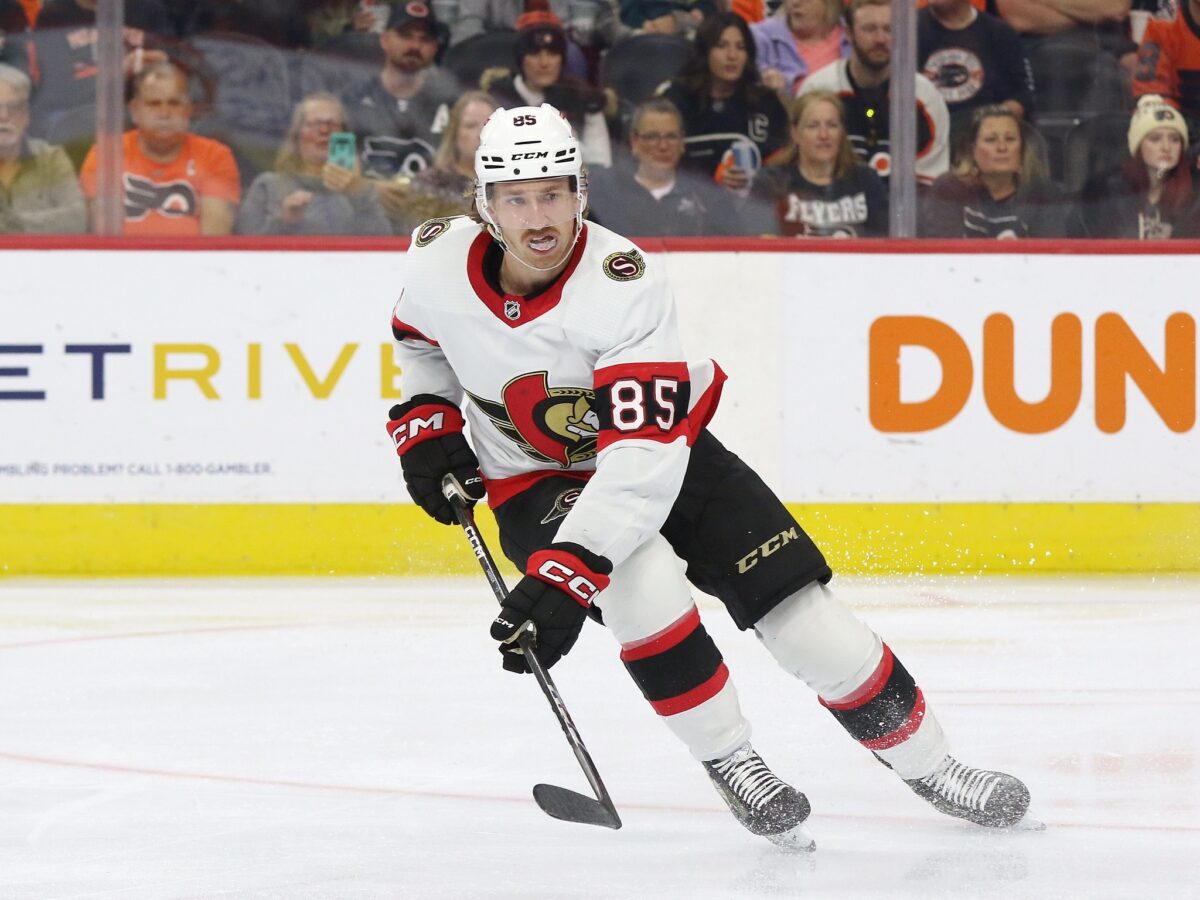
Somehow, the Senators have managed to ice a terrible hockey team and miss the playoffs for the seventh consecutive season while eating up all their cap space.
Senators’ Prospect Pipeline is Dismal
With cap space tight, prospects could be used to sweeten a package to snag a veteran. In time, they could also be used to add to the Senators’s roster. Yet the Senators’ pipeline is almost empty.
The Hockey Writers’ Logan Horn ranked the Senators’ farm system 32nd in the NHL. The only prospects they have of note are Jorian Donovan, Zack Ostapchuk, Guenette, Angus Crookshank, and Roby Jarventie. There’s no guarantee that any of them will prove to be NHLers.
Senators Have Few Picks to Package in Trades
The Senators can’t afford to give away draft picks to help them trade for veteran talent. Blame for that must be laid at the feet of Pierre Dorion, whose disregard for asset management in the last few years was breathtaking. He handed out high draft picks like candy at a kid’s Halloween party to facilitate trades. Fans were left to wonder whether those picks could have helped their team acquire decent goaltending and possibly a much-needed right-shot defenceman.
The Alex DeBrincat trade still stings. In the summer of 2022, the Senators traded their seventh and 39th overall selections to get him from the Chicago Blackhawks. He was gone a year later, and all Dorion had to show for it was Kubalik, a prospect, a conditional first-round pick, and a fourth-round pick in 2024. There are so many conditions on the first-round pick that it probably won’t amount to much.
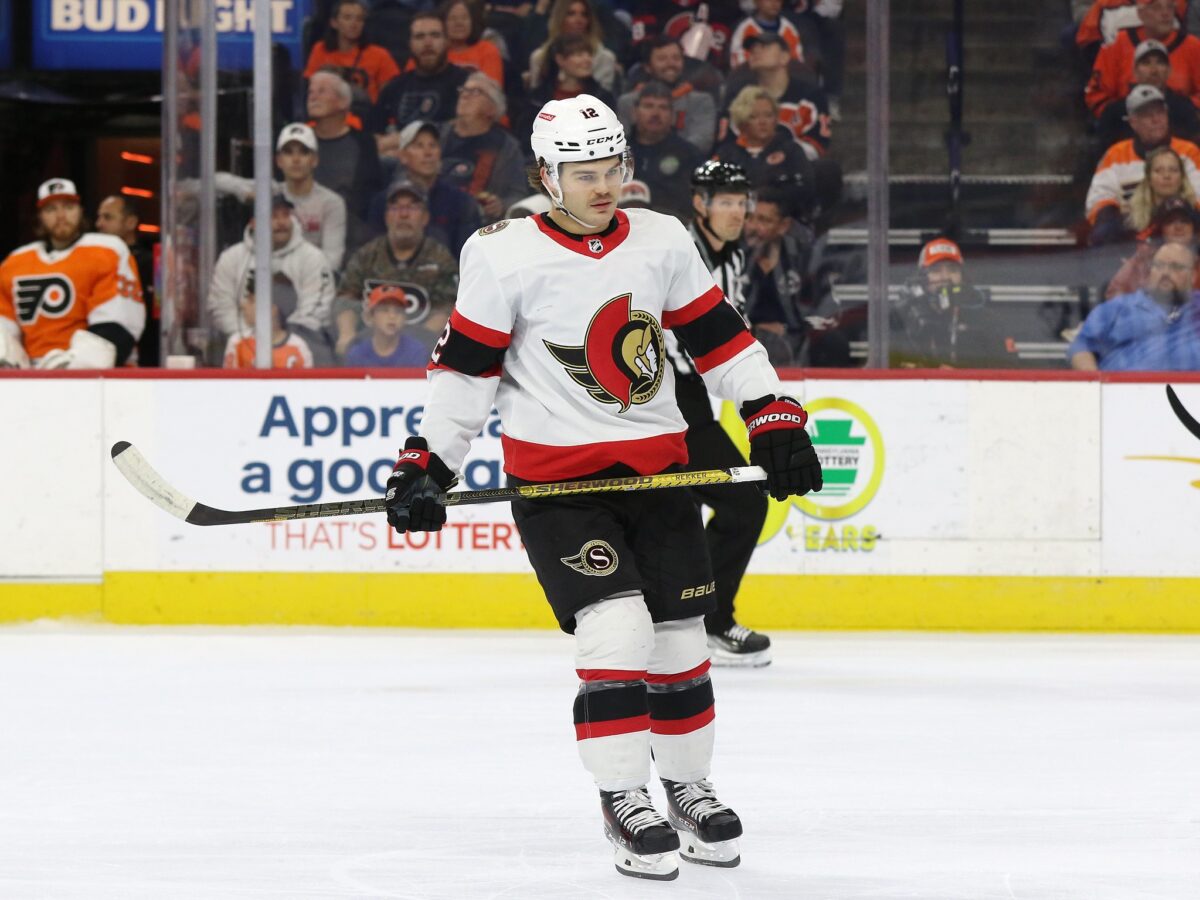
In 2023, the Senators gave up a first-round pick, a second-round pick in the 2024 draft, and a second-round selection in 2026 to acquire Chychrun. It was excruciating that the Senators had already sent their second and third-round picks to dump salaries for Nikita Zaitsev and Matt Murray. They also jettisoned a sixth-rounder to the Philadelphia Flyers for Patrick Brown. That left the Senators with only five draft picks, three of which were in the seventh round.
Finally, let’s not forget the Evgenii Dadonov fiasco. Dorion’s careless work in that trade will cost the Senators a first-round pick sometime before 2026. On top of that, the disappointing development seen in former first-round picks Lassi Thomson and Tyler Boucher and the release of three of their six picks in 2021 casts a dark shadow on the Senators’ future. A case could be made that the Senators haven’t drafted one NHLer in the last three drafts.
This is to say that you can’t afford to trade away high draft picks when you’re a team that hasn’t made the playoffs in years.
Senators Could Retain Salary to Add to Picks
So, with no cap space to add meaningful pieces to his roster and few picks and prospects to sweeten trade packages or improve his team over the long haul, Staios finds himself boxed in. On the surface, the only way out of this quandary is to continue giving away picks and prospects in return for enough veteran talent to turn his team around. Yet in the 3-5 years, that means yet another rebuild as the core’s contracts expire and they drift off to other franchises.
Still, the Tarasenko trade at this year’s deadline, featuring a 50% salary retention in exchange for picks, could serve as a model. It may seem counterintuitive for a team already up against the cap to hold onto salary, but it may be the only option. Tarasenko’s $5 million salary was probably too much for the Florida Panthers’ GM, Bill Zito, to swallow. Still, a deal became possible with the Senators willing to retain half his salary in exchange for draft picks. There may be other opportunities where salary retention could be used to improve the Senators’ portfolio of picks.
Senators Will Struggle to Become a Playoff Team
The reality is that it’s hard to turn the corner from being a rebuilder to a legitimate playoff team. And the Senators’ mismanagement of their assets under Dorion has made it even harder.
Great teams became so by developing their young prospects, strengthening their farm system, and mentoring the youngsters on their roster. Ottawa hasn’t done enough of any of that. When teams who became great had their core in place, and arguably the Senators do, they built around them. Free agency deals are fine, but successful teams tend to avoid them until they truly are a playoff contender and need to add a finishing touch or two to pursue a championship.
Up against the cap, in a city where few veterans want to go, and with very few picks and prospects in the cupboard, Staios has little choice but to solider on.
